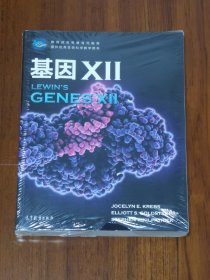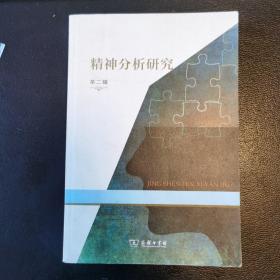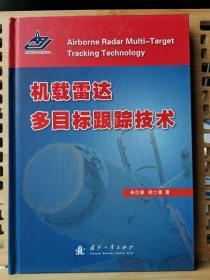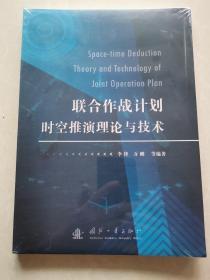
Java核心技术卷I基础知识第11版英文版上下册
正版图书,可开发票,请放心购买。
¥ 121.94 8.2折 ¥ 149 全新
库存7件
广东广州
认证卖家担保交易快速发货售后保障
作者[美]凯·S. 霍斯特曼(Cay S. Horstmann)
出版社人民邮电
ISBN9787115504920
出版时间2019-05
装帧其他
开本其他
定价149元
货号30606364
上书时间2023-08-27
- 店主推荐
- 最新上架
商品详情
- 品相描述:全新
- 商品描述
-
导语摘要
Java领域颇具影响力和价值的经典著作曾获Jolt生产效率大奖的Java经典图书新版全面体现JavaSE9、JavaSE10和JavaSE11的新变化本书是两卷本中的第一卷,书中深入介绍了基本的Java和UI编程,包括对象、泛型、集合、Lambda表达式、Swing设计、并发和函数式编程。如果你已经是有经验的程序员,只是刚学习JavaSE9、JavaSE10或JavaSE11,应该没有比本书更适合的资料了,它集中了专家见解、解决方案和代码。
●掌握编写优秀Java代码的基础技术、习惯用法和最佳实践。
●充分利用接口、Lambda表达式和内部类的强大力量。
●通过高效的异常处理和调试让程序更可靠。
●通过泛型编程编写更安全、可复用性更好的代码。
●使用Java的标准集合类改进性能和效率。
●使用Swing工具箱构建跨平台图形界面应用。
●通过Java改进的并发支持充分发挥多核处理器的能力。
想深入了解JavaSE9、JavaSE10或JavaSE11的企业特性、模块系统、网络、安全和高级UI编程,请阅读《Java核心技术卷II:高级特性(第11版)》。
目录
Chapter 1: An Introduction to Java / Java概述 1
1.1 Java as a Programming Platform / Java程序设计平台 1
1.2 The Java“White Paper”Buzzwords / Java“白皮书”中的口号 2
1.2.1 Simple / 简单 3
1.2.2 Object-Oriented / 面向对象 4
1.2.3 Distributed / 分布式 4
1.2.4 Robust / 健壮 4
1.2.5 Secure / 安全 5
1.2.6 Architecture-Neutral / 体系结构中立 6
1.2.7 Portable / 可移植 6
1.2.8 Interpreted / 解释型 7
1.2.9 High-Performance / 高性能 7
1.2.10 Multithreaded / 多线程 8
1.2.11 Dynamic / 动态 8
1.3 Java Applets and the Internet / Java Applet与Internet 9
1.4 A Short History of Java / Java简史 10
1.5 Common Misconceptions about Java / 对Java的常见误解 13
Chapter 2: The Java Programming Environment / Java编程环境 17
2.1 Installing the Java Development Kit / 安装Java开发包(JDK) 18
2.1.1 Downloading the JDK / 下载JDK 18
2.1.2 Setting up the JDK / 设置JDK 20
2.1.3 Installing Source Files and Documentation / 安装源文件和文档 22
2.2 Using the Command-Line Tools / 使用命令行工具 23
2.3 Using an Integrated Development Environment / 使用集成开发环境 29
2.4 JShell 32
Chapter 3: Fundamental Programming Structures in Java / Java的基本编程结构 37
3.1 A Simple Java Program / 一个简单的Java程序 38
3.2 Comments / 注释 41
3.3 Data Types / 数据类型 42
3.3.1 Integer Types / 整型 43
3.3.2 Floating-Point Types / 浮点型 44
3.3.3 The char Type / char类型 46
3.3.4 Unicode and the char Type / Unicode与char类型 47
3.3.5 The boolean Type / boolean类型 48
3.4 Variables and Constants / 变量和常量 48
3.4.1 Declaring Variables / 声明变量 48
3.4.2 Initializing Variables / 初始化变量 50
3.4.3 Constants / 常量 51
3.4.4 Enumerated Types / 枚举类型 52
3.5 Operators / 运算符 52
3.5.1 Arithmetic Operators / 算术运算符 52
3.5.2 Mathematical Functions and Constants / 数学函数和常量 54
3.5.3 Conversions between Numeric Types / 数值类型之间的转换 56
3.5.4 Casts / 强制类型转换 57
3.5.5 Combining Assignment with Operators / 组合赋值运算符 58
3.5.6 Increment and Decrement Operators / 自增与自减运算符 58
3.5.7 Relational and boolean Operators / 关系与boolean运算符 59
3.5.8 Bitwise Operators / 位运算符 60
3.5.9 Parentheses and Operator Hierarchy / 括号与运算符优先级 61
3.6 Strings / 字符串 62
3.6.1 Substrings / 子串 62
3.6.2 Concatenation / 拼接 63
3.6.3 Strings Are Immutable / String是不可变的 63
3.6.4 Testing Strings for Equality / 测试字符串是否相等 65
3.6.5 Empty and Null Strings / 空串与null串 66
3.6.6 Code Points and Code Units / 码位与编码单元 66
3.6.7 The String API / String API 68
3.6.8 Reading the Online API Documentation / 阅读在线API文档 71
3.6.9 Building Strings / 构建字符串 74
3.7 Input and Output / 输入和输出 75
3.7.1 Reading Input / 读取输入 75
3.7.2 Formatting Output / 格式化输出 78
3.7.3 File Input and Output / 文件输入和输出 83
3.8 Control Flow / 控制流 86
3.8.1 Block Scope / 块作用域 86
3.8.2 Conditional Statements / 条件语句 87
3.8.3 Loops / 循环 91
3.8.4 Determinate Loops / 确定性循环 95
3.8.5 Multiple Selections—The switch Statement / 多重选择:switch语句 99
3.8.6 Statements That Break Control Flow / 用于跳出控制流的语句 102
3.9 Big Numbers / 大数 105
3.10 Arrays / 数组 108
3.10.1 Declaring Arrays / 声明数组 108
3.10.2 Accessing Array Elements / 访问数组元素 109
3.10.3 The “for each” Loop / “for each”循环 110
3.10.4 Array Copying / 数组复制 111
3.10.5 Command-Line Parameters / 命令行参数 112
3.10.6 Array Sorting / 数组排序 113
3.10.7 Multidimensional Arrays / 多维数组 116
3.10.8 Ragged Arrays / 不规则数组 120
Chapter 4: Objects and Classes / 对象与类 125
4.1 Introduction to Object-Oriented Programming / 面向对象编程简介 126
4.1.1 Classes / 类 127
4.1.2 Objects / 对象 128
4.1.3 Identifying Classes / 识别类 129
4.1.4 Relationships between Classes / 类之间的关系 129
4.2 Using Predefined Classes / 使用预定义类 131
4.2.1 Objects and Object Variables / 对象与对象变量 132
4.2.2 The LocalDate Class of the Java Library / Java库中的LocalDate类 135
4.2.3 Mutator and Accessor Methods / 更改器方法与访问器方法 138
4.3 Defining Your Own Classes / 定义自己的类 141
4.3.1 An Employee Class / Employee类 142
4.3.2 Use of Multiple Source Files / 使用多个源文件 145
4.3.3 Dissecting the Employee Class / 分析Employee类 146
4.3.4 First Steps with Constructors / 从构造器开始 146
4.3.5 Declaring Local Variables with var / 使用var声明局部变量 148
4.3.6 Working with null References / 使用null引用 148
4.3.7 Implicit and Explicit Parameters / 隐式参数与显式参数 150
4.3.8 Benefits of Encapsulation / 封装的好处 151
4.3.9 Class-Based Access Privileges / 基于类的访问权限 154
4.3.10 Private Methods / 私有方法 155
4.3.11 Final Instance Fields / final实例字段 155
4.4 Static Fields and Methods / 静态的字段与方法 156
4.4.1 Static Fields / 静态字段 156
4.4.2 Static Constants / 静态常量 157
4.4.3 Static Methods / 静态方法 158
4.4.4 Factory Methods / 工厂方法 159
4.4.5 The main Method / main方法 160
4.5 Method Parameters / 方法参数 163
4.6 Object Construction / 对象构建 170
4.6.1 Overloading / 重载 170
4.6.2 Default Field Initialization / 默认字段初始化 171
4.6.3 The Constructor with No Arguments / 无参构造器 172
4.6.4 Explicit Field Initialization / 显式字段初始化 173
4.6.5 Parameter Names / 参数名 174
4.6.6 Calling Another Constructor / 调用另一个构造器 175
4.6.7 Initialization Blocks / 初始化块 175
4.6.8 Object Destruction and the finalize Method / 对象析构与finalize方法 180
4.7 Packages / 包 180
4.7.1 Package Names / 包名 181
4.7.2 Class Importation / 导入类 181
4.7.3 Static Imports / 静态导入 183
4.7.4 Addition of a Class into a Package / 将类添加到某个包中 184
4.7.5 Package Access / 包访问权限 187
4.7.6 The Class Path / 类路径 189
4.7.7 Setting the Class Path / 设置类路径 191
4.8 JAR Files / JAR文件 192
4.8.1 Creating JAR files / 创建JAR文件 192
4.8.2 The Manifest / 清单文件 193
4.8.3 Executable JAR Files / 可执行的JAR文件 194
4.8.4 Multi-Release JAR Files / 支持多个Java版本的JAR文件 195
4.8.5 A Note about Command-Line Options / 关于命令行选项的说明 197
4.9 Documentation Comments / 文档注释 198
4.9.1 Comment Insertion / 插入注释 199
4.9.2 Class Comments / 类注释 199
4.9.3 Method Comments / 方法注释 200
4.9.4 Field Comments / 字段注释 201
4.9.5 General Comments / 通用注释 201
4.9.6 Package Comments / 包注释 202
4.9.7 Comment Extraction / 提取注释 203
4.10 Class Design Hints / 类设计建议 204
Chapter 5: Inheritance / 继承 207
5.1 Classes, Superclasses, and Subclasses / 类、超类与子类 208
5.1.1 Defining Subclasses / 定义子类 208
5.1.2 Overriding Methods / 覆盖方法 210
5.1.3 Subclass Constructors / 子类构造器 211
5.1.4 Inheritance Hierarchies / 继承层次 216
5.1.5 Polymorphism / 多态 217
5.1.6 Understanding Method Calls / 理解方法调用 218
5.1.7 Preventing Inheritance: Final Classes and Methods / 阻止继承:final修饰的类和方法 221
5.1.8 Casting / 强制类型转换 223
5.1.9 Abstract Classes / 抽象类 225
5.1.10 Protected Access / 受保护访问 231
5.2 Object: The Cosmic Superclass / Object:所有类的超类 232
5.2.1 Variables of Type Object / Object类型的变量 232
5.2.2 The equals Method / equals方法 233
5.2.3 Equality Testing and Inheritance / 相等测试与继承 234
5.2.4 The hashCode Method / hashCode方法 238
5.2.5 The toString Method / toString方法 241
5.3 Generic Array Lists / 泛型数组列表 248
5.3.1 Declaring Array Lists / 声明数组列表 248
5.3.2 Accessing Array List Elements / 访问数组列表的元素 251
5.3.3 Compatibility between Typed and Raw Array Lists / 类型化和原始数组列表的兼容性 255
5.4 Object Wrappers and Autoboxing / 对象包装器与自动装箱 256
5.5 Methods with a Variable Number of Parameters / 参数数量可变的方法 260
5.6 Enumeration Classes / 枚举类 261
5.7 Reflection / 反射 264
5.7.1 The Class Class / Class类 264
5.7.2 A Primer on Declaring Exceptions / 初步了解如何声明异常 267
5.7.3 Resources / 资源 268
5.7.4 Using Reflection to Analyze the Capabilities of Classes / 使用反射分析类的能力 271
5.7.5 Using Reflection to Analyze Objects at Runtime / 使用反射在运行时分析对象 277
5.7.6 Using Reflection to Write Generic Array Code / 使用反射编写泛型数组代码 283
5.7.7 Invoking Arbitrary Methods and Constructors / 调用任意方法和构造器 286
5.8 Design Hints for Inheritance / 继承的设计建议 290
Chapter 6: Interfaces, Lambda Expressions, and Inner Classes / 接口、Lambda表达式和内部类 295
6.1 Interfaces / 接口 296
6.1.1 The Interface Concept / 接口的概念 296
6.1.2 Properties of Interfaces / 接口的特性 303
6.1.3 Interfaces and Abstract Classes / 接口与抽象类 305
6.1.4 Static and Private Methods / 静态和私有方法 306
6.1.5 Default Methods / 默认方法 307
6.1.6 Resolving Default Method Conflicts / 解决默认方法的冲突 308
6.1.7 Interfaces and Callbacks / 接口与回调 310
6.1.8 The Comparator Interface / Comparator接口 313
6.1.9 Object Cloning / 对象克隆 314
6.2 Lambda Expressions / Lambda表达式 322
6.2.1 Why Lambdas / 为什么引入Lambda表达式 322
6.2.2 The Syntax of Lambda Expressions / Lambda表达式的语法 323
6.2.3 Functional Interfaces / 函数式接口 326
6.2.4 Method References / 方法引用 328
6.2.5 Constructor References / 构造器引用 332
6.2.6 Variable Scope / 变量作用域 333
6.2.7 Processing Lambda Expressions / 处理Lambda表达式 335
6.2.8 More about Comparators / 再谈Comparator 339
6.3 Inner Classes / 内部类 340
6.3.1 Use of an Inner Class to Access Object State / 使用内部类访问对象状态 341
6.3.2 Special Syntax Rules for Inner Classes / 内部类的特殊语法规则 345
6.3.3 Are Inner Classes Useful Actually Necessary Secure / 内部类是否有用、必要和安全 346
6.3.4 Local Inner Classes / 局部内部类 349
6.3.5 Accessing Variables from Outer Methods / 从外部方法访问变量 350
6.3.6 Anonymous Inner Classes / 匿名内部类 352
6.3.7 Static Inner Classes / 静态内部类 356
6.4 Service Loaders / 服务加载器 360
6.5 Proxies / 代理 362
6.5.1 When to Use Proxies / 何时使用代理 363
6.5.2 Creating Proxy
— 没有更多了 —






















以下为对购买帮助不大的评价